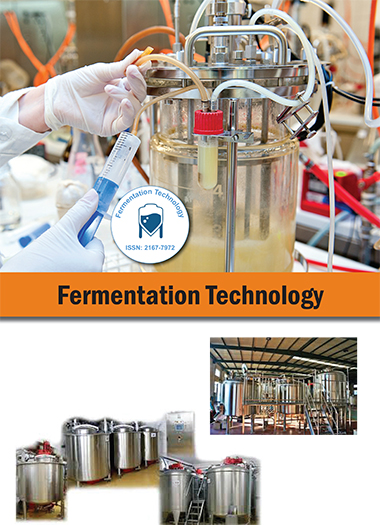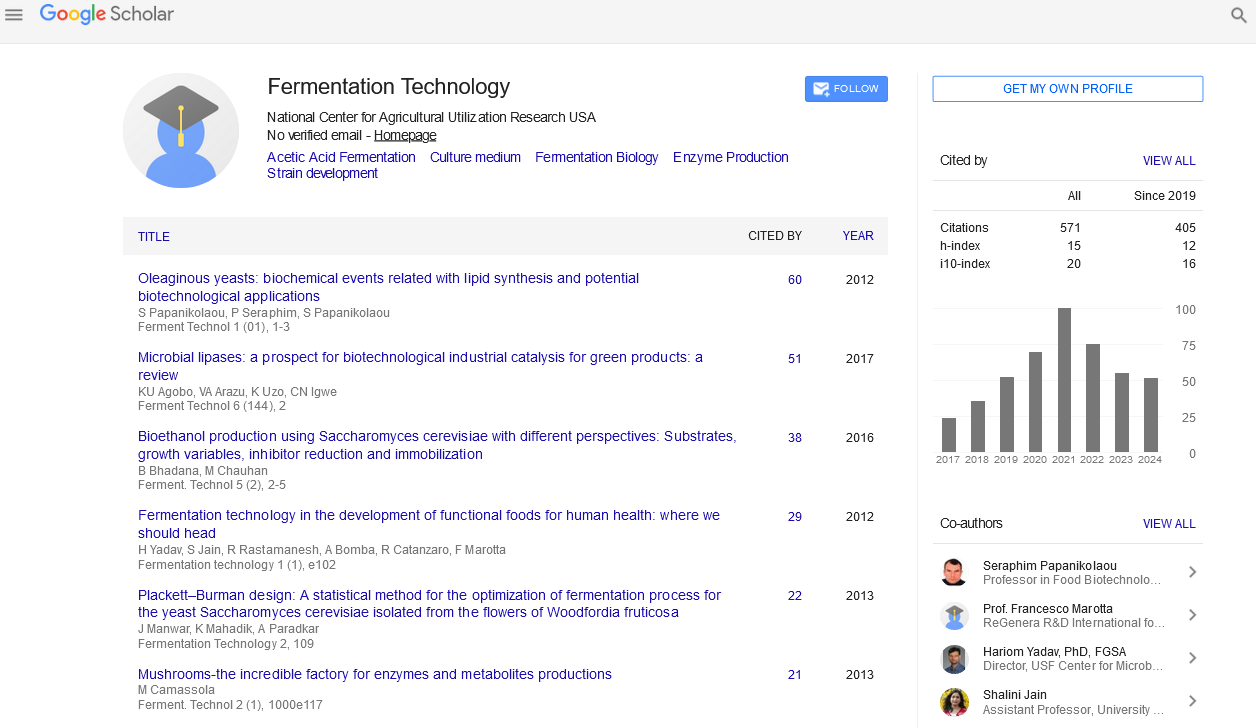Indexed In
- Open J Gate
- Genamics JournalSeek
- Access to Global Online Research in Agriculture (AGORA)
- RefSeek
- Hamdard University
- EBSCO A-Z
- OCLC- WorldCat
- Publons
Useful Links
Share This Page
Journal Flyer

Open Access Journals
- Agri and Aquaculture
- Biochemistry
- Bioinformatics & Systems Biology
- Business & Management
- Chemistry
- Clinical Sciences
- Engineering
- Food & Nutrition
- General Science
- Genetics & Molecular Biology
- Immunology & Microbiology
- Medical Sciences
- Neuroscience & Psychology
- Nursing & Health Care
- Pharmaceutical Sciences
Abstract
Volatile Composition of Wines Elaborated from Organic and Non-OrganicGrapes
Lorenzo C, Garde-Cerdán T, Lara JF, MartÃnez-Gil AM, F Pardo and Salinas MR
The aim of this work was to study the evolution of volatile compounds during the alcoholic fermentation of organic and non-organic grapes. To do this, grapes were cultivated using organic and non-organic grapes; their tasting showed some differences between both types of Monastrell grapes. Throughout the alcoholic fermentation, the samples of organic grapes had higher concentration of total alcohols but lower concentration of esters and acids than the samples of conventional ones. Therefore, the volatile composition of wines from two different cultivated grapes using both agronomic practices was different. Moreover, regarding to the volatile compounds that contributed directly to wine aroma, generally organic wine had more chemicals and floral aromas, while the wines from conventional practices had more fruity aromas. Principal component analysis (PCA) showed that it is possible to differentiate between both types of wines in terms of concentration of volatile compounds formed during the alcoholic fermentation. Consequently, agronomic practices affected the grape taste, the wine volatile composition
and its quality.

